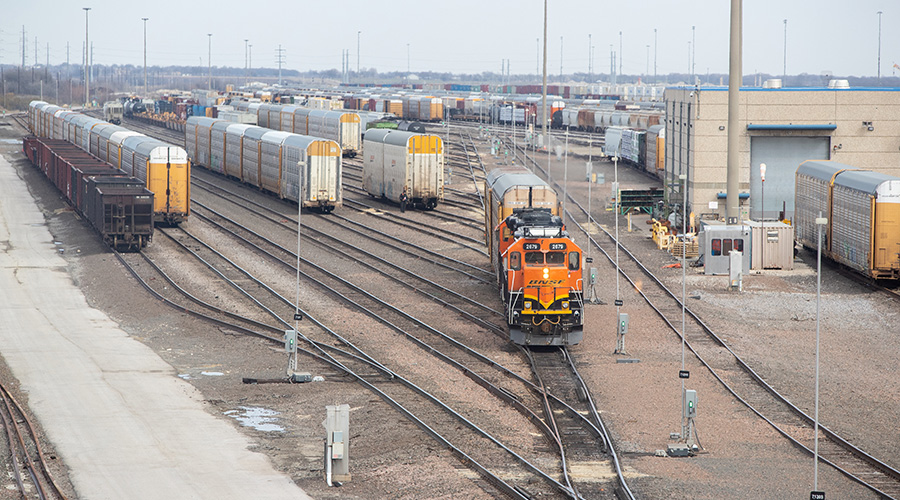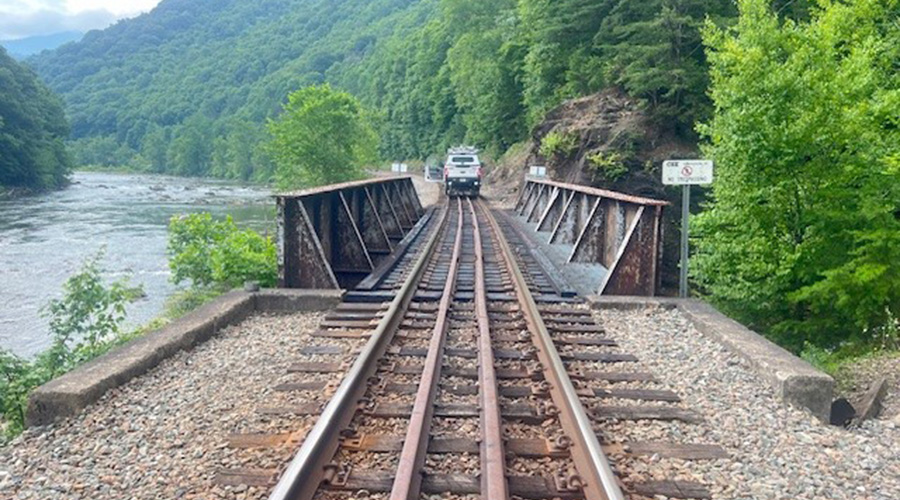BNSF: Alliance terminal remains a key intermodal network cog after three decades
8/19/2024
By Jeff Stagl, Managing Editor
Something considered unique in the rail industry occurred in 1994. The Atchison, Topeka & Santa Fe Railway built a facility in Haslet, Texas, specifically for intermodal.
At the time, that traffic segment was just beginning to gain traction after bursting on the rail scene in the late 1980s. Yet, the Santa Fe established the terminal as part of an aggressive effort to grow its intermodal business.
Now, BNSF Railway Co. is marking the 30th anniversary of the Alliance Intermodal Facility that its predecessor constructed just north of Fort Worth on 13,000 acres of farmland. In 1995, the Santa Fe and Burlington Northern Railroad merged to form BNSF.
Today, the Alliance terminal stretches over nearly 500 acres and features nine production tracks, four of which are more than 8,000 feet long. It’s located within the 26,000-acre AllianceTexas Development that also includes the Perot Field Fort Worth Alliance Airport and three UPS and FedEx Corp. sorting hubs.
The terminal plays a similar yet expanded role for the Class I versus when it opened, serving as part of a modern railroad transportation center in the Southwest, BNSF officials say.
“The facility anchors domestic and intermodal traffic in the Dallas/Fort Worth markets, as well as surrounding areas, such as San Antonio and Oklahoma City,” said Scott Hernandez, BNSF’s assistant vice president of intermodal strategy and innovation, in an email.
The Alliance facility serves as a key connection point for intermodal traffic heading in and out of Mexico to Dallas/Fort Worth, Chicago, the upper Midwest and West Coast. It operates 24/7 and handles international and domestic containers for such major customers as FedEx, UPS Supply Chain Solutions, JCPenny and Walmart Inc.
 Over the past 30 years, the terminal’s overall track length has jumped 350% and number of parking spots have ballooned from several hundred to more than 8,500. BNSF Railway Co.
Over the past 30 years, the terminal’s overall track length has jumped 350% and number of parking spots have ballooned from several hundred to more than 8,500. BNSF Railway Co.Currently, size and flexibility are among the Alliance terminal’s biggest advantages, said Hernandez.
“It has the capability to adapt to market needs quickly and can flex parking from wheeled to stacking and adjust to volume fluctuations,” he said. “Its size allows for multiple trains to [serve] some markets in a day, such as Chicago.”
Bigger and busier
Over the past 30 years, the terminal’s overall track length — including production and storage tracks — has jumped 350% and number of parking spots have ballooned from several hundred to more than 8,500. Since 2010, the fleet of cranes has more than doubled from 10 to 24.
In addition, the terminal’s volume has more than quadrupled since 1994. The average number of containers and trailers that are loaded and unloaded at the facility each day has shot up from about 500 to 2,700, with a record daily high of 3,900.
Alliance is one of two facilities on BNSF’s network that have handled 1 million lifts in a given year. The other is the Hobart Intermodal Facility in Los Angeles.
“Logistics Park Chicago is capable and was close to hitting that number at one point,” said Hernandez.
The Alliance terminal also features some advanced technologies, such as artificial intelligence (AI) systems and drones that help monitor inventory. For example, an AI-based algorithm piloted at the facility creates load plans for outbound trains in seconds, ensuring containers and trailers are correctly positioned, BNSF officials say. The algorithm has shortened the average time it takes to load a train by more than 30 minutes.
Expansions and technological advancements over the years have enabled the Alliance facility to increase lift capability. Last year, BNSF added a lane between the Port of Houston and Alliance/Haslet to serve the greater Dallas/Fort Worth market and another lane to Denver.
Before the Santa Fe built the Alliance terminal, intermodal facilities typically were developed from former classification yards, with sets of tracks removed and pavement added to accommodate trucks, cranes and parking spots.
A rewarding, repeatable design
The design of the Alliance facility included a more efficient parking layout, increased track centers to provide double-sided production tracks and 60-foot-span overhead cranes to load and unload containers or trailers on either side of a track. Those features increased service capability, capacity and efficiency, BNSF officials say.
That design would be repeated at several future intermodal terminals, such as one built in Stockton, California.
 Situated near Fort Worth, the facility features some advanced technologies, such as artificial intelligence systems and drones that help monitor inventory. BNSF Railway Co.
Situated near Fort Worth, the facility features some advanced technologies, such as artificial intelligence systems and drones that help monitor inventory. BNSF Railway Co.“It’s a greenfield site that’s linear, with parking adjacent to loading/unloading tracks,” Hernandez said of the Stockton facility. “Ingate/outgate flow is strategically positioned to maximize facility flow.”
The Alliance terminal’s design also played a role in the logistics park concept pioneered by BNSF. The parks are BNSF-owned intermodal hubs with surrounding large-scale warehouse development.
BNSF opened Logistics Park Chicago in 2002 and Logistics Park Kansas City in 2013. The Class I also has announced plans to develop logistics parks in Phoenix and Barstow, California.
BNSF now operates 27 intermodal facilities in 14 states and five logistics centers that provide direct-rail service in multi-customer, multi-commodity business parks.
Although the Alliance terminal likely will be expanded or upgraded again in the future, there are no plans to share at the moment, said Hernandez.
“But there are potential options we are exploring to expand and partner closer with local commercial developers,” he said.


